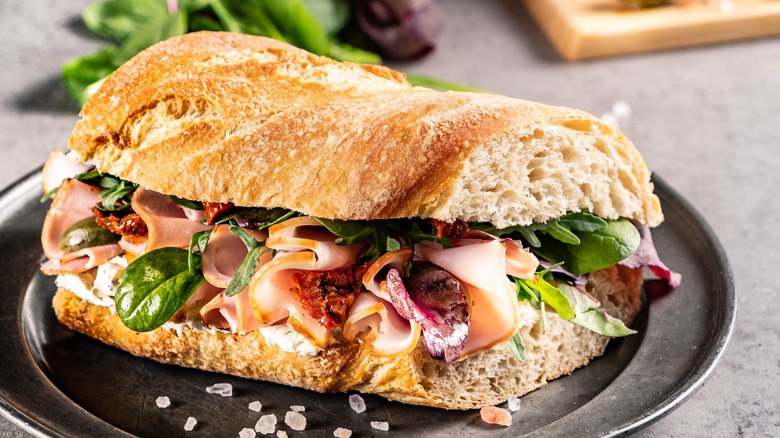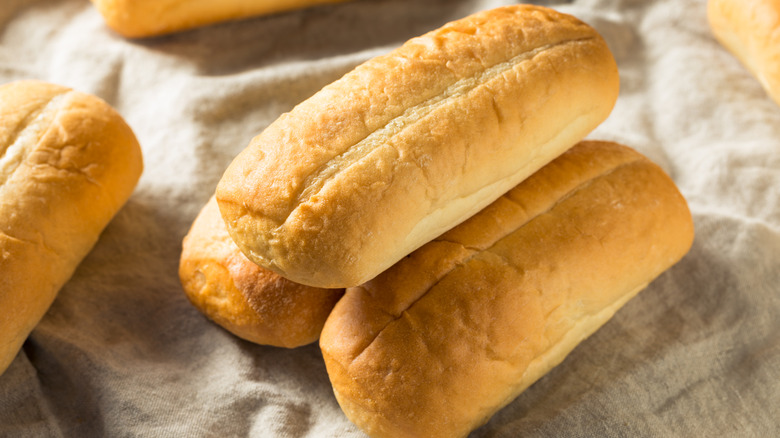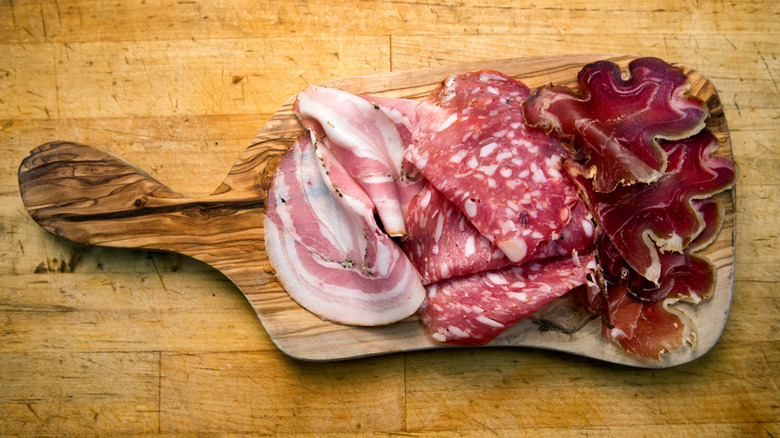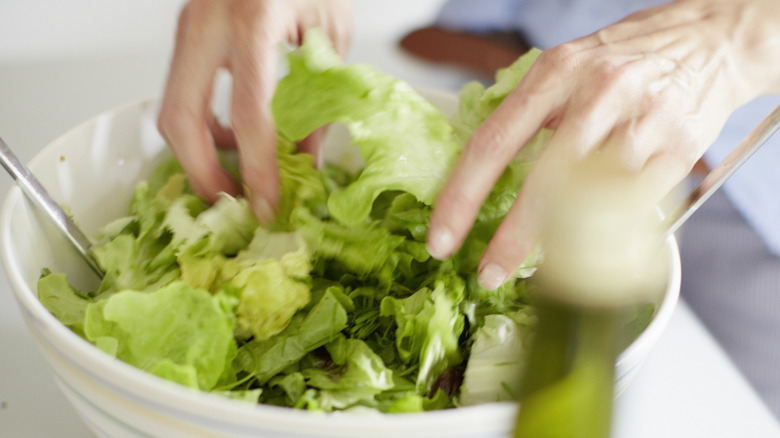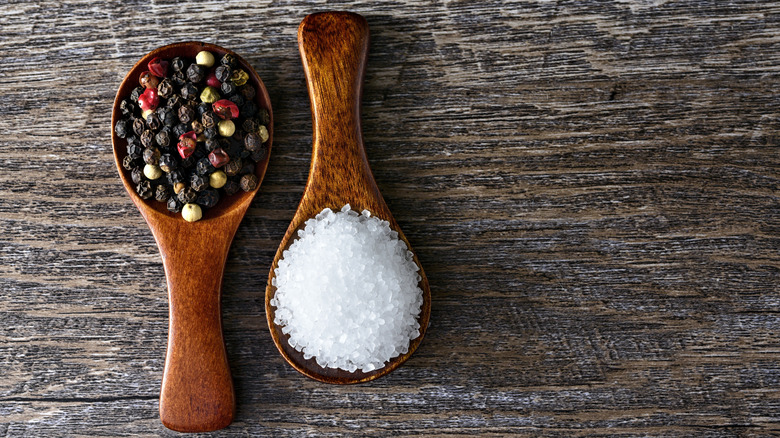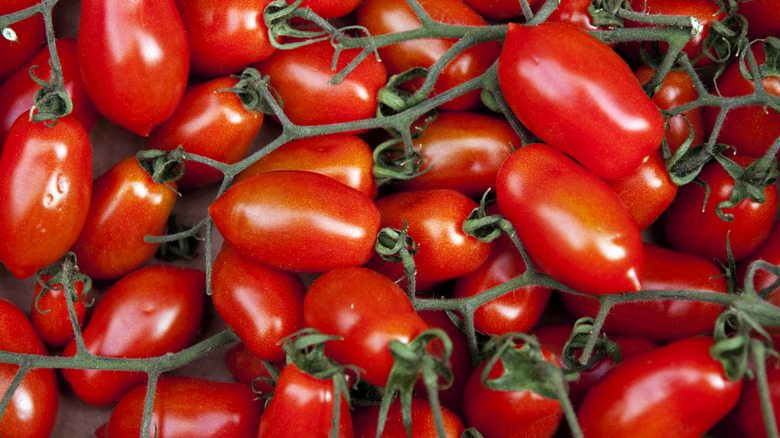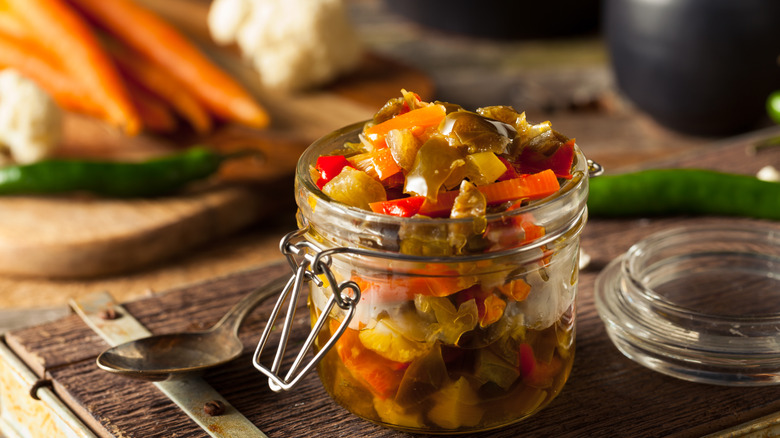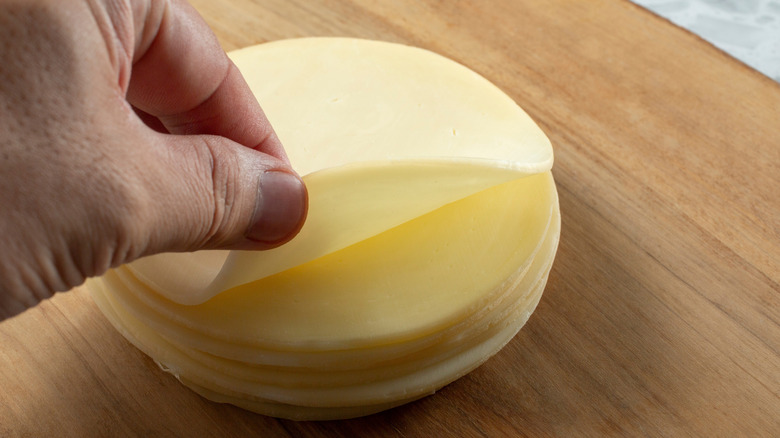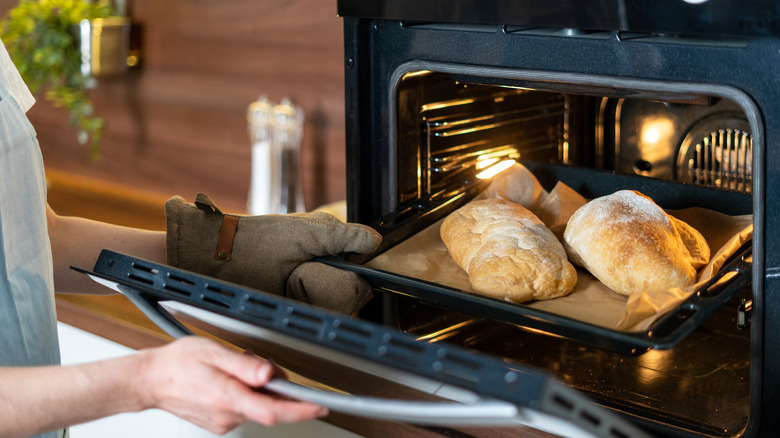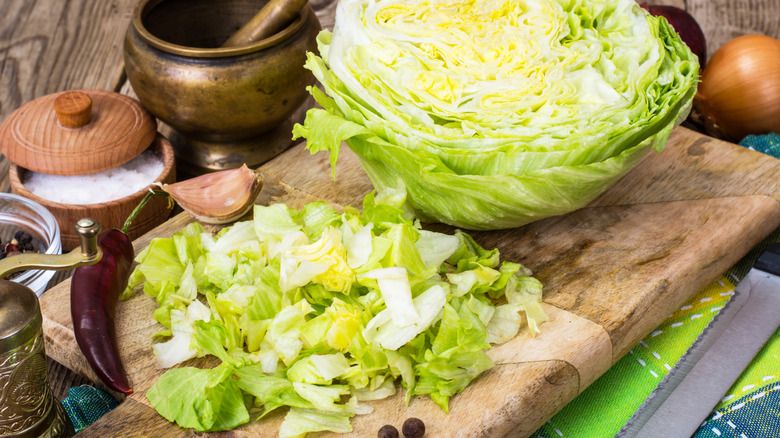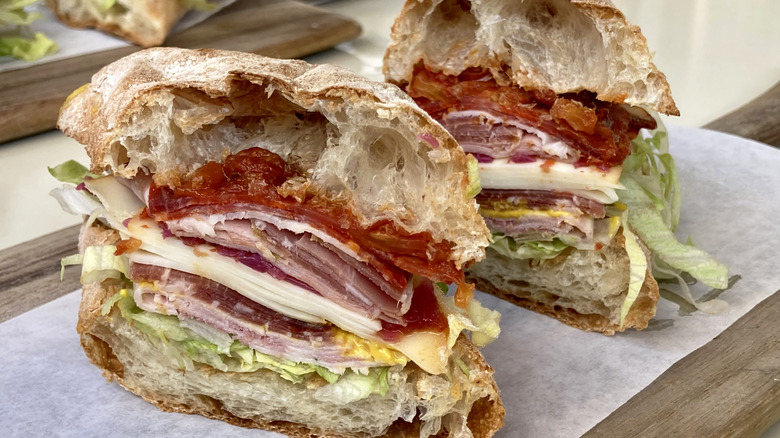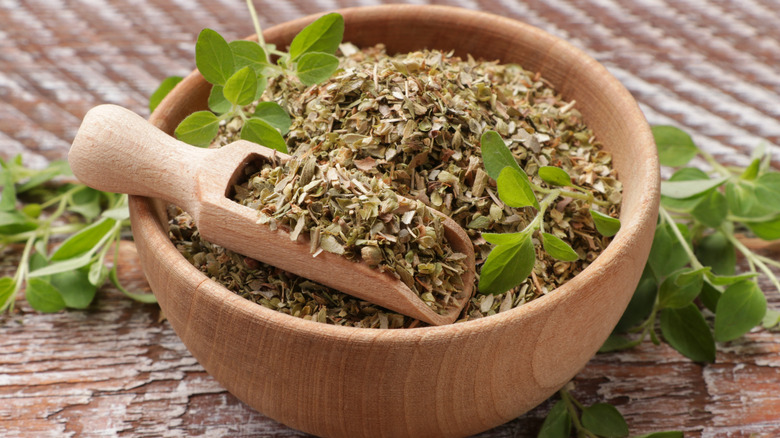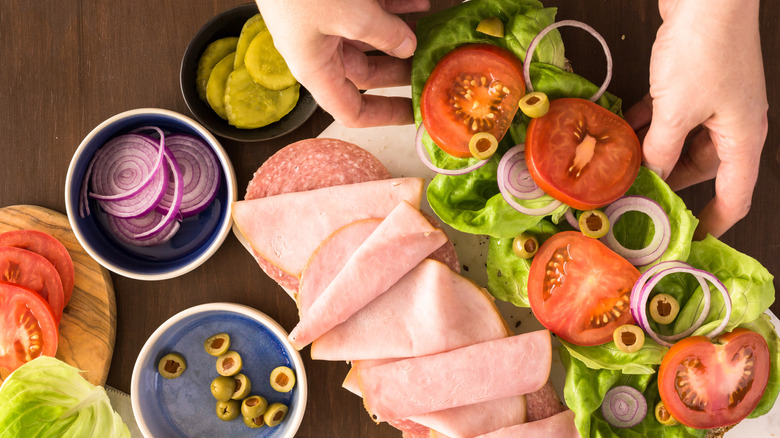15 Tips To Make Your Sub Sandwiches Instantly Better
A stellar sub benefits from the right balance of fat, acidity, and texture. The composition of a sub matters and it all comes down to the proportion of flavorful ingredients. Rich, savory cured meats and a bit of thinly sliced Italian cheese are coupled with bright, tangy pickled vegetables on a crusty roll. These are the makings of a truly excellent sub.
Depending on your regional affiliations, a sub can be dubbed a grinder, a hoagie, a blimpie, a po' boy, a wedge, or even simply an Italian. No matter what you call it, this sandwich is universally loved — and for good reason. There are no complicated techniques here, but taking your sub to the next level does require intention. A thoughtful assembly, using quality ingredients, and striking complementary flavors are some tricks to constructing a superb sub. By learning a few additional deli secrets, you can master a classic sub at home. And perhaps, make it even better.
Choose a crusty sub roll with a soft interior
Selecting the right bread is critical to the integrity of the sandwich. A standard sub roll is a go-to choice, with a pillowy interior and a slight crackle on the outside. To avoid stale — or worse, soggy — bread, select long Italian loaves from the bins in the bakery section of your local grocery store. The broad shape allows for ample surface area to pile the fillings high.
When choosing the right bread for your sub, don't reach for thick-crusted artisanal bread. Not the time. Instead, follow the lead of old school Italian delis, which often offer an array of rolls: hard or soft, seeded or unseeded, long or wide. When in doubt, an Italian-style loaf works well here since it has a softer crumb with a bit of chew. This helps the interior of the bread absorb the oils, juices, and drippings from the fillings.
Marinated vegetables can elevate your sandwich
Smokey roasted red peppers are an obvious yes for a sub, but there are so many other exciting marinated veggies to layer on your sandwich. Italian antipasto ingredients such as earthy artichoke hearts in an herbaceous oil, briny chopped olives, or tangy sun-dried tomatoes add an extra boost of flavor and spice. Before diving in, there are a few things you need to know about antipasto and its purpose.
Traditional antipasto contains a vibrant assortment of Italian specialty ingredients, with the literal translation meaning "before the meal." The medley creates a harmony of contrasting textures and tastes, from chopped to sliced, firm to soft, salty to zesty. Antipasto is an enduring culinary tradition in Italy, with the intention to liven your taste buds before sitting down to a full meal. Lucky for us, antipasto ingredients can have the same effect on a sandwich, awakening your palate with zippy flavoring. For your next sub, be sure to include a jarred ingredient or two you'd find in a colorful antipasto to vitalize your sandwich.
A great sub has a variety of cured meats
It's no secret that a classic sub is loaded with a variety of delicious, Italian cured meats. To create a sandwich that resembles the one from your beloved neighborhood deli, you absolutely must layer more than one type of meat. The combination creates an assortment of punchy, salty, and savory bites.
While a creamy mortadella studded with pistachios, a spicy Italian sausage like soppressata, and a classic cooked deli ham are often three standard choices, you have full liberty to think more creatively. In fact, a peppery capicola, a spiced Genoa salami, or a salty prosciutto di Parma are all excellent additions. The variety creates a diversity of tasty textures. Using both cured and cooked meats also lends a greater array of flavor profiles to up your sandwich game. But don't go overboard; stick with three or four different types of cured meat.
Dress the lettuce for your sub
Once you've determined the type and amount of cured meats to include, it's time to move onto the accouterments. A masterful sub will have the vegetables play an equally important role as the proteins. A quick restaurant tip for a standout sandwich is to toss the greens in a sub with dressing, as you would for a salad. An undressed, dry salad sounds tremendously unappetizing, and it's no different in a sandwich. Jazzing up the lettuce helps ensure there is flavor in every bite.
The dressing can and should be simple. A squeeze of fresh lemon juice, a splash of red wine vinegar, a hefty drizzle of olive oil, and salt and pepper with a pinch of oregano is all you need. When tossing lettuce in any dressing, tread lightly — you can always add more. Because while using dry salad greens is an egregious faux pas, oversaturated greens may be even worse.
Season every ingredient in your sandwich
It's not only about dressing the veggies. All ingredients can be enhanced by generously seasoning with both salt and ground pepper. It's a quick tip that intensifies the flavor of every component. A pinch of salt is a hack often overlooked when composing a sub. That's because all of the cured meats, aged cheeses, and marinated, pickled veggies can be, well, naturally quite salty. But thoughtfully adding a bit of salt to each ingredient can in fact make the ingredients taste more like themselves.
What's more, salt and pepper add more than solely flavor. Salt can preserve the integrity of the sandwich. Take tomatoes, for example. Through the chemical reaction of osmosis, salting tomatoes can help draw out the excess liquid, making the tomatoes less watery. This technique enhances and concentrates the natural sweetness of the fruit to make the flavors pop. It's a surefire way to prevent what we're always trying to avoid: a dreaded soggy (or under seasoned) sandwich.
Select the right tomatoes for your sub
Tomatoes can be polarizing. Especially in a sandwich. Few ingredients are as disappointing as a dull, pale, tasteless, out-of-season tomato, which risks ruining a perfectly good sub. It's honestly why some people hate raw tomatoes. Too often, supermarket tomatoes are bred to withstand refrigeration, which contributes to their lackluster reputation. But preconceived notions about tomatoes doesn't mean steering clear of them all together. Quite the contrary. You just need to know the trick to select the right ones to use.
When choosing a tomato for your sub, look for firm, bright red plum tomatoes, which have a thicker skin and fewer seeds and pulp. Plum tomatoes in particular lend a signature sweet juiciness without making the sandwich mushy. Importantly, opt for tomatoes that are in season when you can. Since subs can and should be enjoyed year-round, not only during the summer, salt, pepper, and a drizzle of oil can liven tomatoes, no matter the time of year.
Add a drizzle of good oil and vinegar
A classic sub does not require a fancy or complicated vinaigrette. An easy tip is to keep the dressing simple with olive oil and red wine vinegar — that's it. Don't overthink or try to emulsify a concoction with too many unnecessary ingredients. Simplicity is best. The duo of oil and vinegar is the perfect alchemy of richness and acidity. Don't sully a good thing.
Be generous with the oil, too. There's no need for exact measurements; but a good rule of thumb for a standard 12-inch soft Italian roll is to drizzle roughly two tablespoons each of oil and vinegar on the bottom half of the bread. Don't forget to save some reserves for tossing the lettuce as well. Dousing a sub with a generous amount of oil and red wine vinegar will transform an ordinary sandwich into a magnificent, quintessential sub.
Pickled ingredients are a must for subs
In addition to red wine vinegar, pickles continue to build a complex acidity. This helps counterbalance the rich, fatty meats and cheeses. There's no right or wrong kind of pickle, as long as a pickled ingredient is included. From bright banana peppers (or pepperoncini) to jarred pickled giardiniera, there are loads of ways to add a crunch and brightness to a sub.
Let's dive into giardiniera, a real Chicago staple. It's a colorful mix of pickled vegetables, including carrots, celery, peppers, onions, and even cauliflower. The veggies are preserved in oil and vinegar with herbs and spices like garlic and oregano. It's best to look for giardiniera packed in oil, never water. Once you layer on the array of pickled veggies, under no circumstance should you toss out the leftover giardiniera oil. That's liquid gold right there. Set the infused oil aside and generously slather it on your next sandwich for the ultimate flavor booster.
Make sure the cheeses and cured meats are thinly sliced
Using thinly sliced cured deli meats enables all of the ingredients to sing, creating a well-balanced sub. Meticulous slicing also ensures the meat melts in your mouth, rather than being too stringy, large, or embarrassingly hard to chew. No one flavor nor texture should be dominant. Extra thin slices help aerate the entire sandwich, preventing a dense bite. For a visual, think of slices of prosciutto, the crepe paper of meats. These airy thin ribbons can then be folded, rolled, and carefully arranged and layered on the sandwich.
Which brings us to the cheese. Hard cheeses like a classic provolone should be sliced just as thinly. Italian provolone is a semi-hard cheese made from cow's milk. It can be sharp, so use it sparingly. The trick to slicing hard cheese cleanly and thinly is to dip your knife in hot water first. After drying it off, then slice the knife through the cheese, which helps ease a clean glide through the entire cut. The purpose of thin cuts is for all flavors to be distributed evenly.
Lightly toast your sandwich roll
Toasting soft rolls can help create that crunch from the bread's crusty exterior, while keeping the center soft and plush. It's a known fact you can improve your lunch instantly by toasting a sandwich. And this is true for subs as well. A proper toast is the ultimate tip for the perfect handheld.
To do so, preheat the oven to 350 degrees Fahrenheit and cut the Italian loaf in half lengthwise, placing the cut side up on a baking sheet. Toast the bread for only about four to five minutes so it's lightly toasted. Keep a close eye on the bread to avoid overdoing it, since toasting for too long makes for a dry, hard to eat sandwich. Some sub traditionalists rip out a bit of the soft dough to create a dome for the fillings. This is ultimately up to the sandwich crafter, so take this advice or leave it. Regardless, lightly toasting the roll is a surefire way to get an aspirational crust while maintaining the perfect doughy middle.
Don't overlook shredded iceberg lettuce
Shredded iceberg lettuce adds crunch, a contrasting texture, and an inoffensive freshness. While iceberg is no longer the dominant lettuce in America, it still belongs in your sub. A head of iceberg lettuce slightly resembles green cabbage in appearance, but iceberg is considered to be one of the sweeter lettuces in flavor. Finely shredding iceberg lettuce takes careful knife skills. After cutting the head in half, begin chopping one side of the head of lettuce to the other. Of course, the thinner you slice the lettuce, the finer the shred will be, which is the goal.
Piling on crunchy iceberg also protects the bread from becoming overly saturated with oil and vinegar. Iceberg is also an economical choice since it typically lasts longer than other greens. This is critical, since iceberg in particular tends to hold its crispness even if the sandwich has been sitting out or is being transported.
Transport your sub in butcher or wax paper
A sub can be considered the ultimate picnic sandwich. Packing a sub for the beach, a baseball game, or to share at a potluck — it's a great handheld to enjoy on the go. But there's an important trick to transporting the sandwich. Wrapping the sandwich tightly in wax, butcher, or parchment paper will ensure the ingredients stay intact and the sandwich doesn't get soggy. It's all about making your sandwich go the extra mile. Literally.
To wrap a sub like a pro, cut a piece of butcher paper roughly one and a half times the length of the sub. Carefully set the sandwich down diagonally across the paper. Lift one of the corners over the sandwich and press it flush. Then you can proceed with rolling the sandwich in paper toward the far opposite corner, folding in the sides as you go. Once fully tucked, stick on a piece of masking tape to keep it secure. If you choose to cut the sandwich in half, do so after you wrap it tightly in butcher paper. You can make and wrap a sub up to a day ahead and store in the fridge overnight.
Quality Italian ingredients will uplevel you sub
To create a balanced, flavorful sandwich, it's worth noting that using the finest quality ingredients does make a difference. This doesn't necessarily mean procuring fancy, artisanal fixings; subs and heroes have humble origins. The shorthand term sub is an abbreviation of "submarine sandwich." According to legend, the sandwich was dubbed a sub since it resembled the shape of a submarine, circa World War II. As for the hero? Well, the story goes that after New York food writer Clementine Paddleworth quipped ”you'd have to be a hero to finish one” way back in the 1930s, the moniker was born. So neither a hero nor a sub is a dainty, newfangled sandwich. We can honor its legacy while also knowing quality matters. Similar to any exceptional culinary classic, the freshest ingredients can carry a dish.
For the characteristics of each ingredient to really shine, begin with choosing high-quality fillings. For example, if you add mozzarella, look for buffalo mozzarella rather than a low-moisture alternative. Even better is the creamy mozzarella is made onsite. Similar to the cheese, don't cut corners with average, floppy deli meat. The very best deli subs have high-quality purveyors, imported cured meats from Italy, and use seasonal veggies.
Finish with a dash of dried oregano
You may think you can skip dried herbs, but the oregano shouldn't be overlooked. As little as a half of a teaspoon of dried oregano can help create a signature Italian sub flavor. Again, measuring isn't a necessity — a shake or two will do. A dash of dried oregano adds an earthy, pungent savoriness. When combined with oil and red wine vinegar, oregano enhances the other fillings while also adding zest.
Dried oregano is one of the most popular herbs around the globe and often sprinkled on other Italian classics like pizza or pasta. The greenish, brown flakes are ubiquitous on tables of Italian-American restaurants, since they add an herbaceous aroma and a pop of color. The dried herb is typically added to the final product since it can lose its flavor quickly. Same goes for constructing a quality sub, so sprinkle it on at the end.
Assemble your sub with intention
To many, the sub is the most American sandwich. With such a storied past, it's remarkable the gigantic sandwich still has a reputation as such an iconic delicacy. Throughout the decades one thing remains true: Building a perfect sub is a craft that takes a certain thoughtfulness that other sandwiches do not.
To break down the makings of an exceptional sub, start with slice an Italian roll, but not fully through. Carefully open the bread so it lies flat on the surface, adjoined by only one of the edges. Then, delicately layer and fold the thinly sliced meats and cheese across the rolls in ribbons. Top with the pickled ingredients, veggies like razor thin onions, ripe plum tomatoes, and a confetti of dressed lettuce. A critical tip is for the ingredients with more moisture to be wrapped in meat to prevent the soft bread from getting too saturated. The fillings should be generously doused with oil and red wine vinegar and finished with salt, pepper, and of course, oregano. It's an art form. Following this formula can easily upgrade your sub into sandwich royalty.
